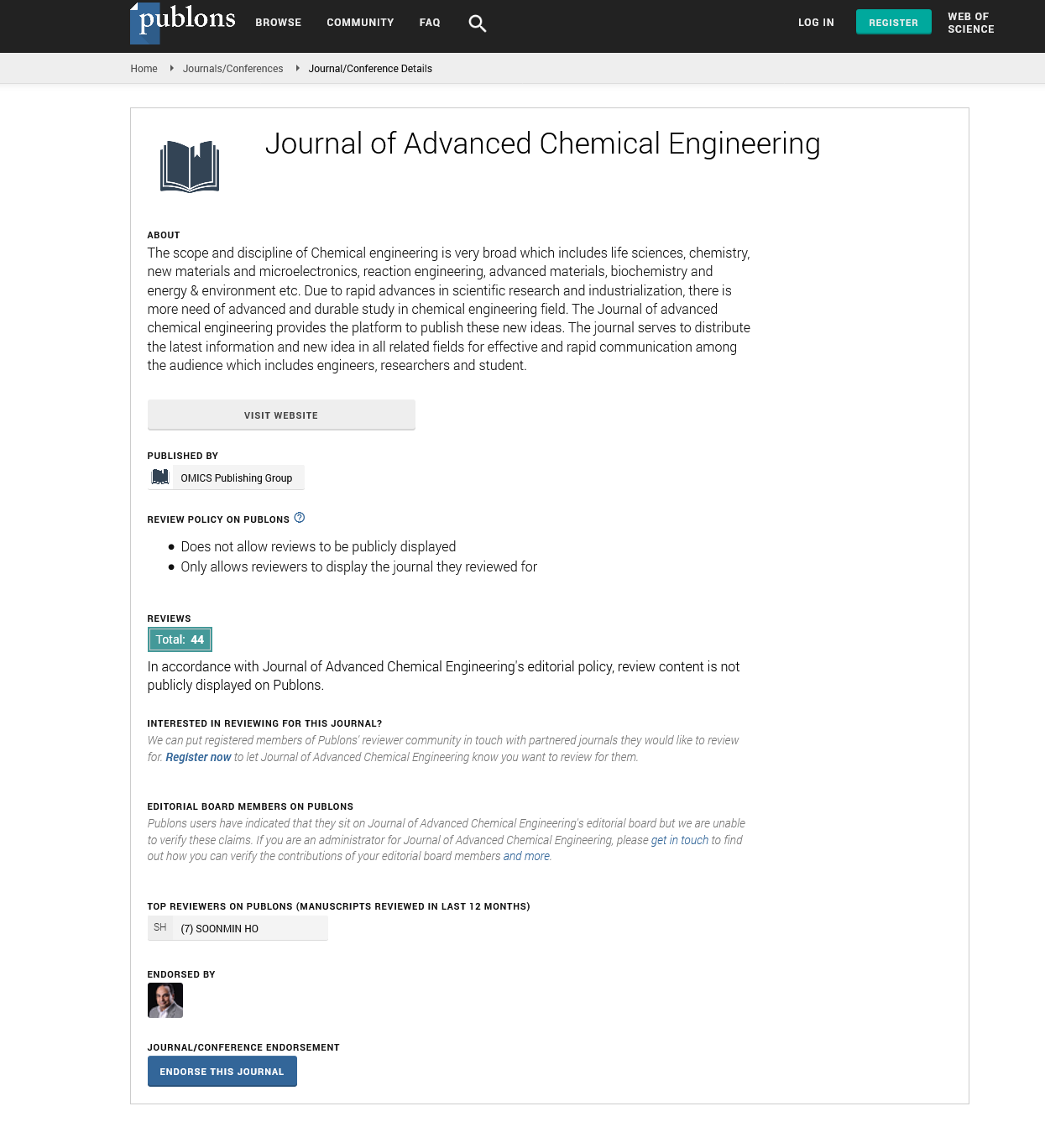Indexed In
- Open J Gate
- Genamics JournalSeek
- Smithers Rapra
- RefSeek
- Directory of Research Journal Indexing (DRJI)
- Hamdard University
- EBSCO A-Z
- OCLC- WorldCat
- Scholarsteer
- Publons
- Geneva Foundation for Medical Education and Research
- Google Scholar
Useful Links
Share This Page
Journal Flyer

Open Access Journals
- Agri and Aquaculture
- Biochemistry
- Bioinformatics & Systems Biology
- Business & Management
- Chemistry
- Clinical Sciences
- Engineering
- Food & Nutrition
- General Science
- Genetics & Molecular Biology
- Immunology & Microbiology
- Medical Sciences
- Neuroscience & Psychology
- Nursing & Health Care
- Pharmaceutical Sciences
Abstract
Evaluation and Characterisation of Composite Mesoporous Membrane for Lactic Acid and Ethanol Esterification
Edidiong Okon, Habiba Shehu and Edward Gobina
Recently, the use of inorganic composite mesoporous membranes in chemical industries has received a lot of attention due to a number of exceptional advantages including thermal stability and robustness. Inorganic mesoporous membranes can selectively remove water from the reaction product during lactic esterification reactions in order to enhance product yield. In this work, the characterization and evaluation of a catalytic mesoporous membrane with 15 nm pore size was tested with different carrier gases before employing the gases for lactic acid and ethanol esterification product analysis with Gas Chromatography coupled with mass spectrometry (GC-MS). The membrane was coated once with silica solution before the permeation test with carrier gases. Helium (He), nitrogen (N2), argon (Ar) and carbon dioxide (CO2) were used for the permeation tests conducted at the feed pressure of 0.10–1.00 bar and at the temperature of 413 K. The gas flow rate showed an increase with respect to feed pressure indicating Knudsen flow as the dominant transport mechanism. The order of the gas flow rate with respect to the feed pressure drop was Ar>CO2>He>N2. The morphological characteristic of the membrane was determined using scanning electron microscopy coupled with energy dispersive x-ray analyzer (SEM/EDXA). The SEM result of the membrane showed the distribution of the silica on the surface of the membrane. The surface area and pore size distribution of the silica membrane was analyze using liquid nitrogen adsorption/desorption method. The surface area results obtained from the Brunauer-Emmett-Teller (BET) isotherm for the 1st and 2nd dip-coated membranes were 1.497 and 0.253 m2/g whereas the Barrette-Joyner-Halenda (BJH) curves for the pore size of the 1st and 2nd dip-coated membranes were 4.184 and 4.180 nm respectively, corresponding to a mesoporous structure in the range of 2-50 nm. The BET isotherms of the silica membranes showed a type IV isotherm with hysteresis. The BJH curve for the 2nd dip-coated membrane showed a 4% reduction in pore size after the modification process.

